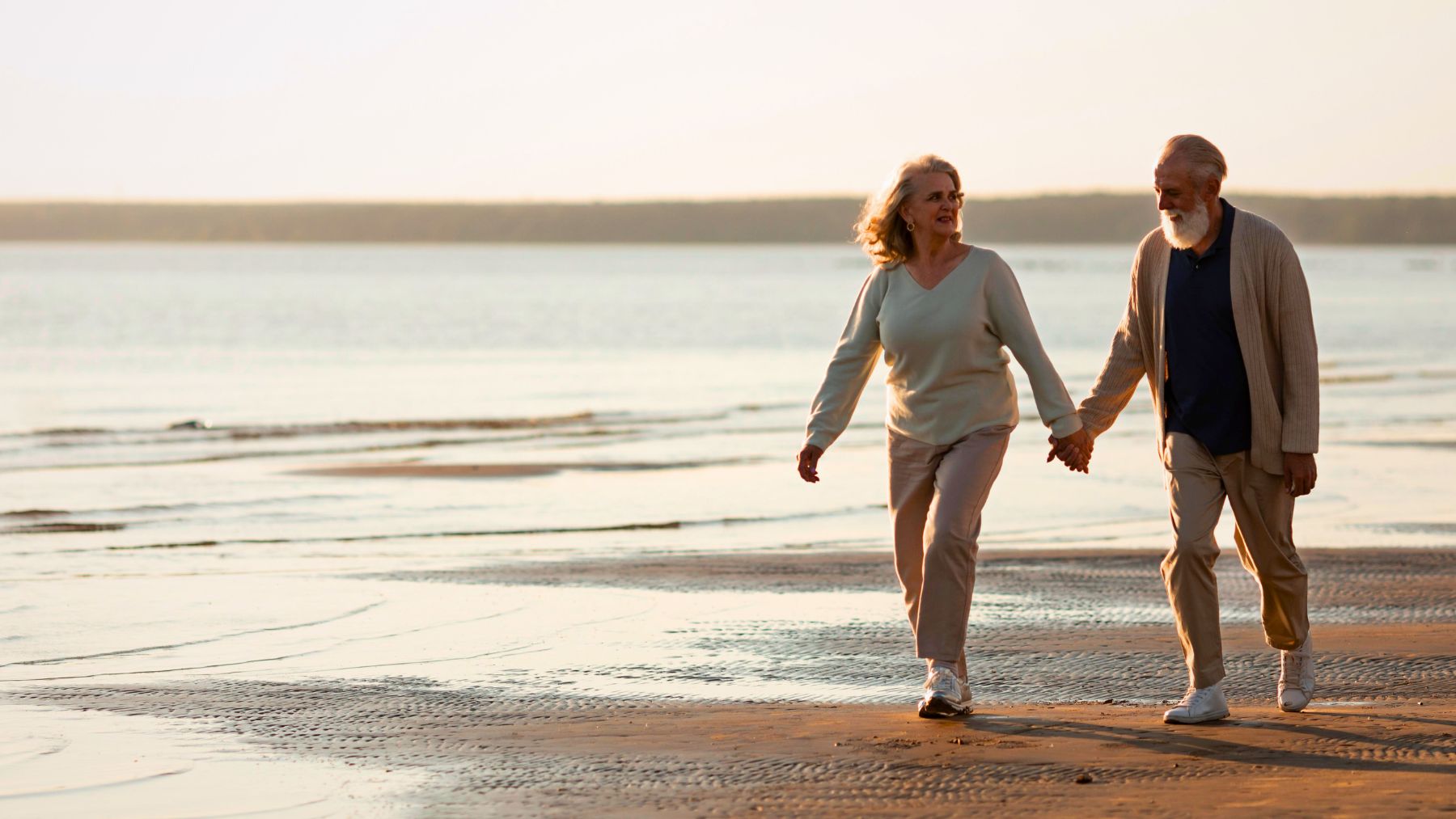Some of the healthiest activities for older adults don’t involve intense workouts or high-impact sports. In fact, one of the best exercises you can do on the beach requires no equipment, no lessons, and no special skills—just your bare feet and a stretch of sand.
Walking barefoot on the beach is more than a relaxing pastime. For those over 65, it can improve balance, strengthen muscles, protect joint health, and boost cardiovascular fitness, all while being gentle on the body. Here, we’ll look at why this simple activity works so well for seniors and how to do it safely to get the most benefits.
Walking barefoot on the beach and why it works
Walking without shoes on sand engages muscles differently than walking on a hard, flat surface. The uneven texture forces the feet, ankles, and legs to work harder to stabilize each step, which can help maintain muscle tone and joint flexibility. For seniors, that extra engagement supports better balance and coordination, two key factors in preventing falls.
The sand also cushions impact, reducing stress on the knees, hips, and spine. This makes it an accessible option for people with mild arthritis or joint discomfort who might find walking on pavement too jarring. In addition, the soft resistance of sand means your cardiovascular system gets a workout without the strain that comes from more vigorous activities.
Then, there are sensory benefits, too. The feet are packed with nerve endings, and walking barefoot stimulates them, promoting circulation. Breathing in moist, salty air along the shore can also improve oxygen intake, while the rhythmic motion of walking near the waves may help reduce stress and improve mood.
For older adults managing conditions like type 2 diabetes or high blood pressure, regular low-impact exercise such as this can support better long-term health. Just as important, it’s an enjoyable activity that doesn’t feel forced, making it more likely to become a habit.
How to make the most of this exercise
To get the benefits without unnecessary risks, a few simple habits can make walking barefoot on the beach safer and more comfortable:
- Avoid the hottest hours: Walk in the early morning or late afternoon to prevent burns from hot sand and reduce sun exposure.
- Protect the skin: Apply sunscreen to the tops of your feet, which are often overlooked but can burn quickly.
- Choose your surface wisely: Damp, compact sand near the shoreline offers more stability and less strain than dry, loose sand.
- Mind the slope: If the beach is steeply angled, alternate walking directions to avoid putting uneven stress on your hips and knees.
- Stay alert: Watch for shells, rocks, or debris that could cause cuts or injuries.
- Finish with care: Rinse your feet afterward to remove salt and sand, then apply moisturizer to prevent dryness.
Walking barefoot on the beach combines gentle strength training, balance work, and cardiovascular exercise in a setting that naturally encourages relaxation. For older folks, it offers a practical way to stay active while enjoying time outdoors. With the right precautions, it’s a habit that can support both physical health and quality of life.

